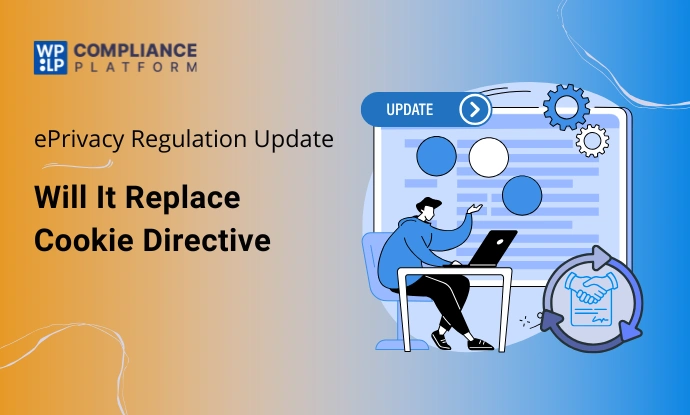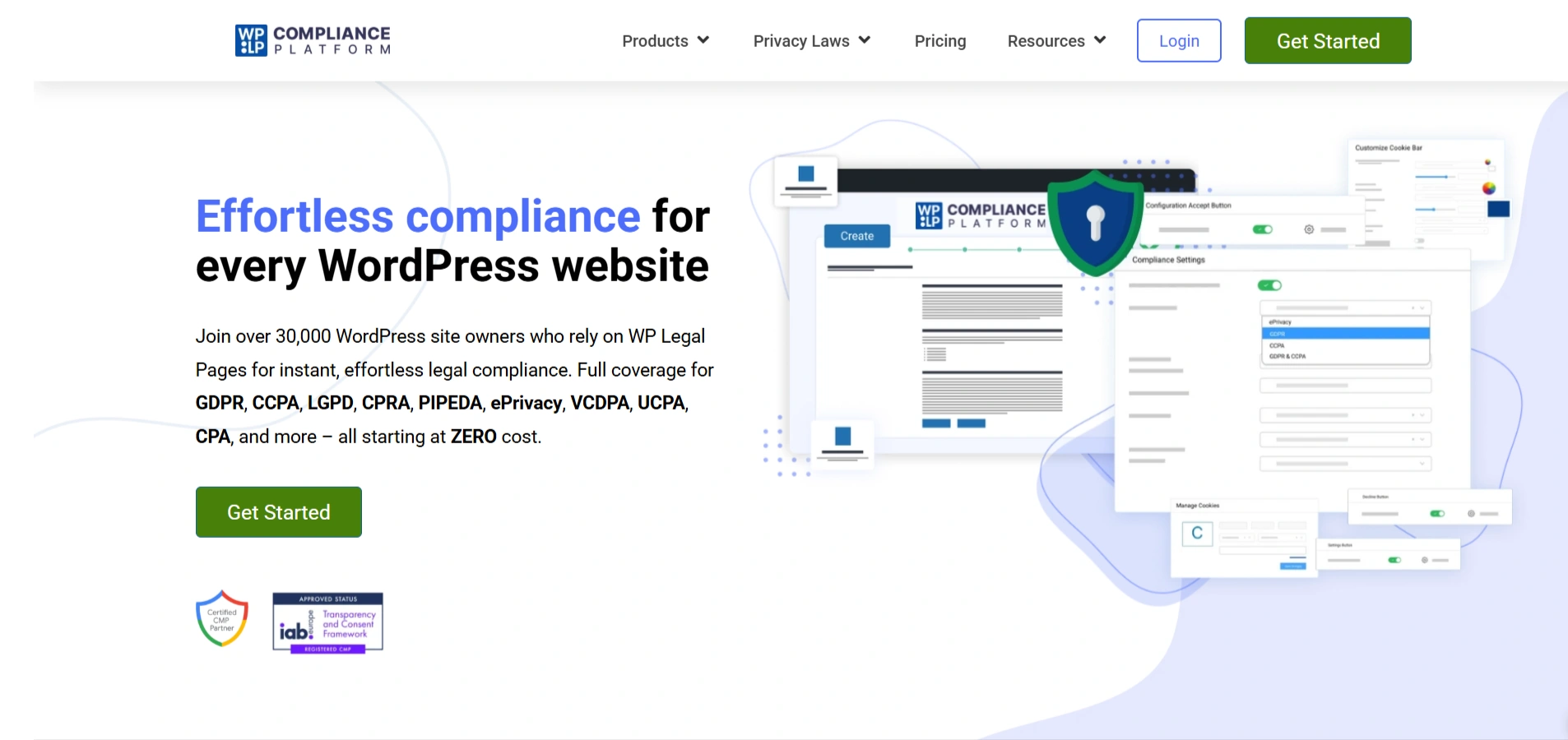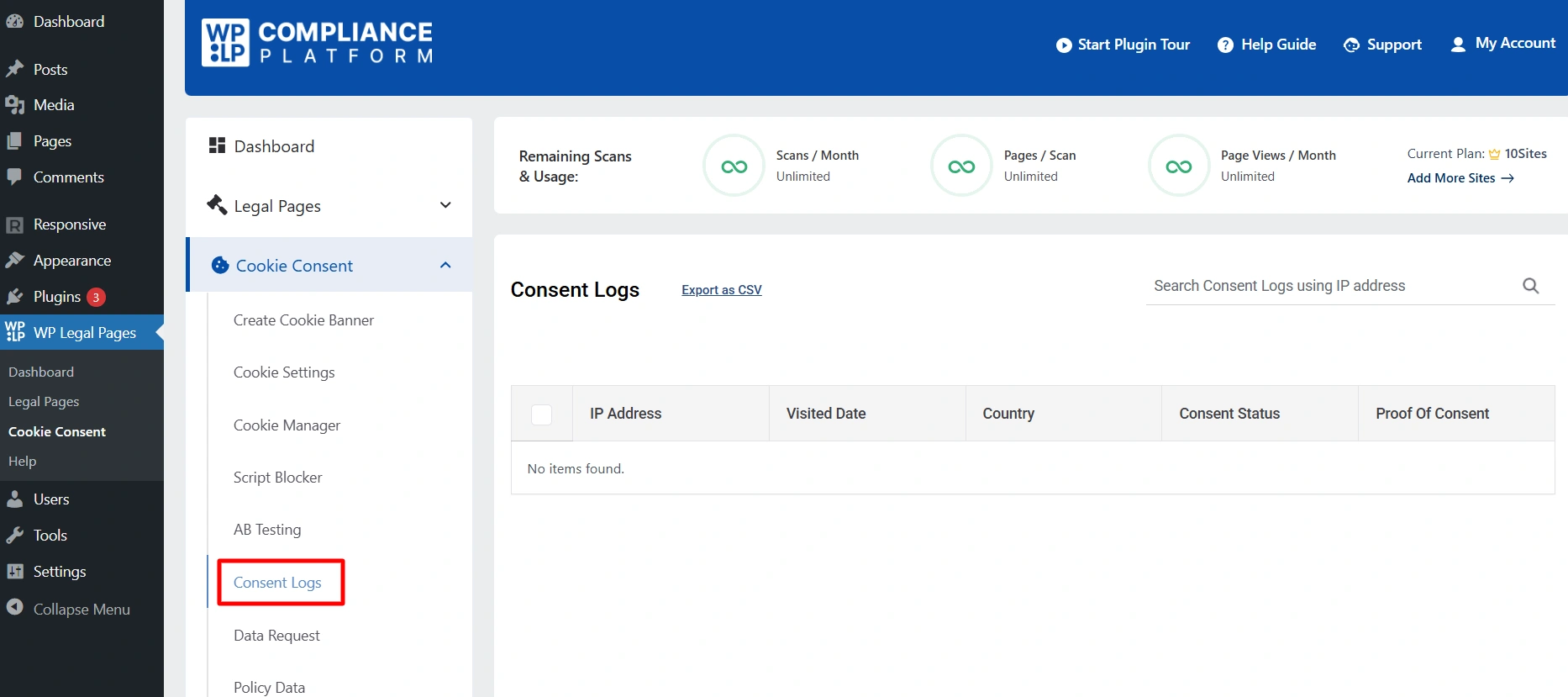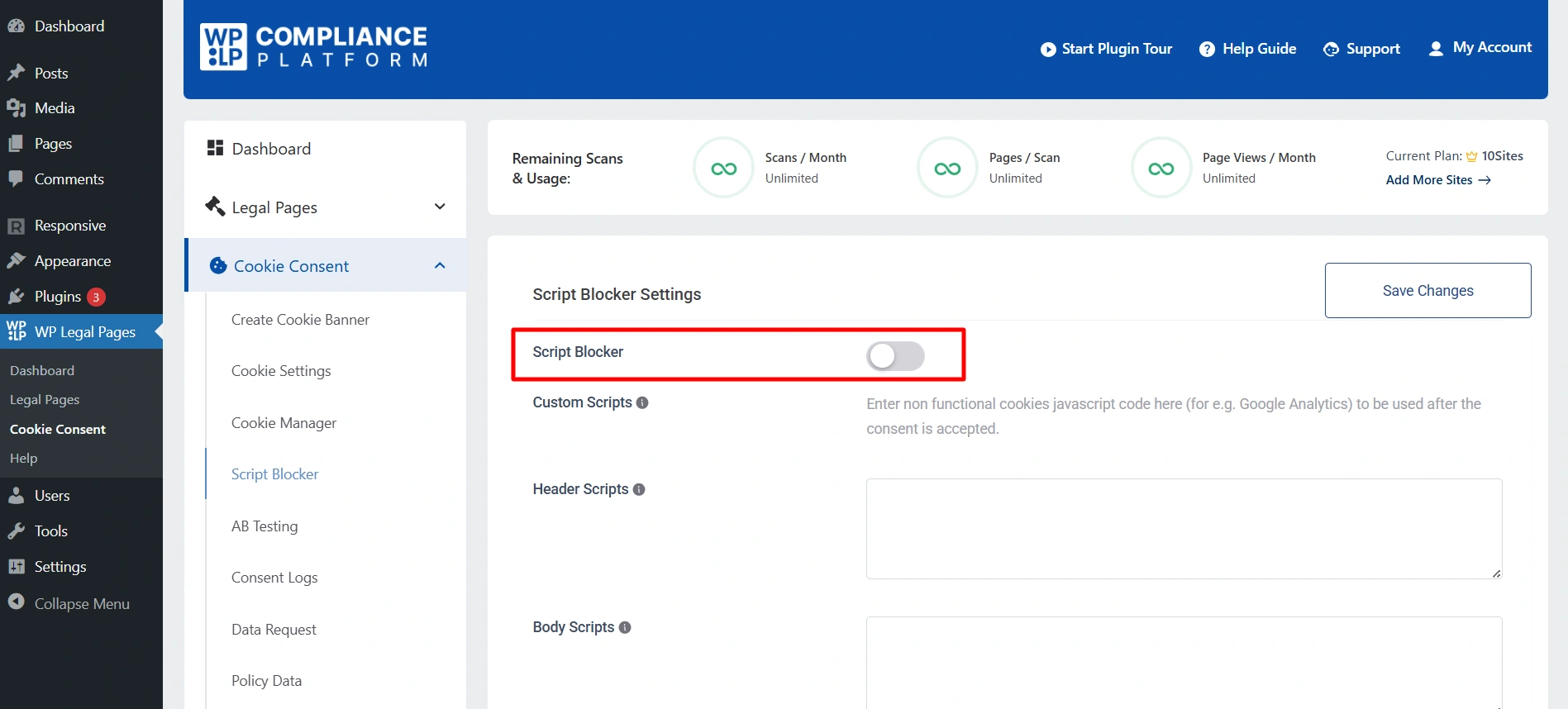ePrivacy Regulation Update: Will It Replace the Cookie Directive?

Summary
In this article, you’ll discover how these modifications will impact businesses and what adjustments are necessary for your cookie banners, privacy policies, and methods of collecting consent.
You’ll also learn how the WPLP Compliance Platform simplifies these responsibilities by offering frameworks to ensure you’re prepared for changing privacy regulations.
Why are cookies and privacy such a big deal today? In today’s world, cookies are the state of the art to keep the internet running and enable analytics, personalization, and digital advertising.
In 2002, the Cookie Directive was implemented to help shield users by mandating that consent is obtained from users prior to storing or accessing cookies.
Since the initial implementation of the Cookie Directive, technology and online behavior have evolved, and the Cookie Directive has not fully caught up with the demands of these developments. To close the gaps, early in 2017, the ePrivacy Regulation was proposed, with the hope of rendering a more decisive and transparent approach to digital privacy across the European Union (EU).
The main question is, will the ePrivacy Regulation ultimately replace or supersede the Cookie Directive, and what does this all mean for the businesses trying to stay compliant in an evolving online privacy environment?
The Cookie Directive & Its Challenges
The Cookie Directive was introduced to regulate the storage of information or access to information on a user’s device. One can do this through a site, which is ultimately where we get today’s infamous cookie banners.
In 2009, it was revised to incorporate new technologies. It specified that websites must obtain permission prior to placing non-essential cookies. That began an era in which many internet users are now familiar with the regular request to “Accept Cookies.”
Those wishes were good, to be open and allow people to have more control. But frankly, the implementation did not live up to the intention.
While businesses complained about the difficulty of abiding by all the cookie compliance elements across EU countries. At the same time people were also suffering from consent fatigue, as they were constantly bombarded with pop-ups.
Key Issues
- Enforcement Inconsistency: Different interests across different EU member states, for instance, could cause an inconsistent interpretation of the directive, as well as different expectations regarding compliance.
- User Irritation: Users didn’t become more engaged with repeated banners and were actually experiencing banner blindness.
- Outdated Jurisdiction: The directive was never intended to encompass new technologies, such as apps, chat, IoT devices, etc., which collect user data.
- Consent Confusion: Many businesses rely on implied consent, which doesn’t consider current expectations around privacy.
In conclusion, the Cookie Directive raised exposure to privacy but its uneven enforcement left a confusing path for everyone to comply to.
That’s where the ePrivacy Regulation comes in, to update older rules and bring consistency across the EU.
What is the ePrivacy Regulation?
The ePrivacy Regulation is the European Union’s planned law to replace the outdated Cookie Directive and add to certain parts of GDPR. It is expected to be introduced soon. It serves as direct applicability in EU countries
The law was proposed in 2017, but has been stalled in negotiations concerning its applicability and what it means for the digital economy.
Main Objective
To provide privacy laws that are consistent for each of the European Union member states so that people enjoy the same protections to their privacy, irrespective of which EU jurisdiction they are in.
Scope
The ePrivacy Regulation broadens the scope of the Cookie Directive legislation, which was primarily focused on the web, cookies, and similar technologies, to now apply to every means of electronic communication, including messaging apps, metadata, and IoT devices.
Key Takeaway
- More Rigorous Cookie Consent Rules: Prior to data tracking or collection, explicit consent must be provided.
- Updated Tracking Regulation: As part of the ePrivacy law update, there was established a framework to track users differently using new technologies, such as any form of fingerprinting, device IDs, or tracking user activity.
- Privacy of Communication: Communicate via email, apps, or website, ensuring the privacy of the communication is consistent.
- More Rigorous Ad Tech Rule: Limiting the use of personal data for targeting ads until an end user has provided clear consent.
- Similar principles to the GDPR: Securing anyone’s right to lawful processing, transparency, and control, similar to what the GDPR addressed.
In other words, ePrivacy expands the GDPR framework to include all digital communication and tracking.
When the ePrivacy Regulation is approved, it will become a regulation rather than a directive, which will make it effective in all the EU countries, as opposed to differing interpretations at the national level.
This is a better way for legal clarity, proper enforcement, and a refresh of Europe’s antiquated approach to the EU ePrivacy rules and digital privacy law in general.
ePrivacy Regulation vs GDPR vs Cookie Directive
There is much debate about the comparison of ePrivacy vs GDPR when discussing privacy in different ways. The ePrivacy Regulation, GDPR, and Cookie Directive all concern your privacy, but put different emphases on different aspects.
Here’s a quick comparison, which will help you understand these three laws.
| Regulation | Focus | Scope | Consent Requirement | Enforcement |
| GDPR | Personal data protection | Any data that identifies individuals | Explicit consent to process personal data | Centralized, in coordination with Data Protection Authorities |
| Cookie Directive | Cookies & tracking | Websites and online cookies | Consent to be obtained prior to using non-essential cookies | National-level can differ |
| ePrivacy Regulation | Electronic Communications Privacy | All digital communication (cookies, metadata, apps) | Explicit and prior consent to track | Across the EU |
In Summary
- GDPR protects personal data, which includes names, emails, and IP addresses.
- The Cookie Directive regulates what websites can do with cookies and online trackers.
- The ePrivacy Regulation combines both, operating over all online communication and new tracking technologies.
Business Implications
Ultimately, even when the ePrivacy Regulation is implemented, businesses will need to continue complying with both GDPR and ePrivacy.
The two laws complement each other:
- GDPR governs the processing of data.
- ePrivacy governs the privacy of communications and consent mechanisms.
Together, they provide the basis for a complete online privacy regulation in the EU, making transparency, accountability, and consent mandatory for all online businesses.
The ePrivacy Regulation is set to reshape how businesses run by implementing stricter consent before any tracking happens. Let’s discuss this further.
What the ePrivacy Regulation Means for Businesses
For organizations, the ePrivacy Regulation poses an important challenge, but also a meaningful opportunity.
Stricter Consent Requirements
Gone are the days of relying on pre-ticked boxes or vague cookie banners to inform consent. Consent must now be explicit, informed, and freely given by users.
Impact on Marketing & Analytics
Marketers will need to have explicit opt-ins for ad tracking and remarketing as well. Likewise, analytics tools like Google Analytics will stop collecting data until users opt-in.
WPLP automatically blocks any cookie usage, or auto- tracking of scripts until consent is provided.
Risks of Non-Compliance
Heavy fines, potentially similar to GDPR fines (up to €20 million or 4% of global turnover) may be imposed for not complying with these new requirements.
- There will be reputational damage due to privacy violations.
- There will be a loss of trust from customers.
Roadmap for Getting Started
- Keep cookie banners compliant and open.
- Audit your cookies, scripts, and all third-party tools regularly.
- Log consent in a way to show compliance in the event of an audit.
ePrivacy Regulation can seem like another layer of regulation; however, it could be a competitive advantage for organizations that get ahead of compliance, as it creates trust and transparency with users.
How to Prepare for the ePrivacy Regulation
Preparing for the ePrivacy Regulation can be a manageable task. The important thing is to get started early and be adaptable.
To prepare, here are the steps you’ll need to take:
- Review your current cookies and trackers: Identify what data you are collecting, who you are sharing it with, and if you have valid consent.
- Update cookie banners and privacy policies: Make opt-ins clear, specific, and easy to use.
- Ensure you’re logging consent: You need to have a record of when and how users consented to any privacy policy, without those logs, there is no proof of compliance.
- Block the scripts until consent is obtained: That way, you will ensure cookie compliance and establish trust from your user base.
- Keep an eye on ePrivacy: The regulations change, staying on top of ePrivacy law updates will help prevent panic towards the end of the transition.
This is where the WPLP Compliance Platform will help you. WPLP automates consent management and supports multiple laws to ensure your organization stays compliant, while you focus on building your business.
How WPLP Helps You Stay Prepared

The WPLP Compliance Platform helps you comply with many different privacy laws, including GDPR, CCPA, and the upcoming ePrivacy Regulation.
- Multi-Law Support: The platform automatically keeps you aligned with the privacy laws as they evolve.
- Consent Logs & Audit Trails: WPLP captures and securely stores consent records.

- Automatic Script Blocking: WPLP prevents trackers from executing prior to obtaining consent.

- Future Ready Compliance: WPLP automatically keeps you compliant as the EU ePrivacy rules evolve.
With the WPLP Compliance Platform, you will be focused on growing your business, and your privacy compliance will run on autopilot through its advanced consent management solution.
Still got any questions? Here are few quick answers you might find helpful.
Frequently Asked Questions (FAQ)
It is a developing law within the EU that regulates the privacy of electronic communications and is meant to eventually replace the Cookie Directive.
Yes, once the ePrivacy Regulation is finalized and imposed, it is intended to fully replace the current Cookie Directive.
Generally, GDPR protects personal data, while ePrivacy regulates communications data and online tracking.
Businesses can prepare for the ePrivacy Regulation by constantly updating their cookie policies for third parties, enabling consent management features, and using solutions such as WPLP to automate compliance.
Absolutely, GDPR and ePrivacy function together, one governs the general processing of data, while the other governs the privacy of communications.
Conclusion
The ePrivacy Regulation will transform online privacy in the EU, an updated framework for legislating privacy that will replace the older Cookie Directive.
While the agenda has stretched out for years, the path forward is clear: stricter cookie consent, greater transparency, and increased control for users. Those who prepare now will not only be better positioned to avoid potential penalties but also will be viewed as a trusted brand in the digital space.
Instead of worrying about your response to the potential of every new regulation, let WPLP Compliance Platform help you, from cookie management, consent, and logging to policy updates.
If you enjoyed reading this, then consider these articles:
- How to Create a Cookie Policy For Your Website
- Best GDPR-Compliant WordPress Themes For Your Website
- Cookie Consent Banner Mistakes (And How to Fix Them)
Stop worrying about privacy policy updates. Instead automate your compliance with WPLP and stay ahead.
Disclaimer: This blog post is only for general information purposes and it does not contain any legal advice.
